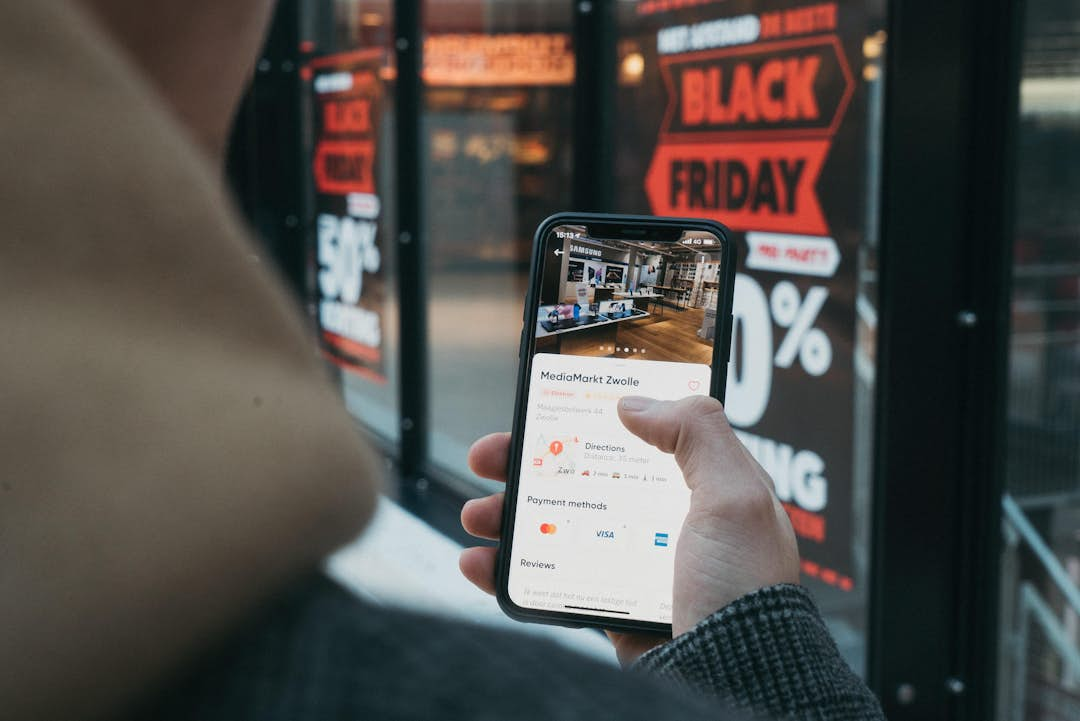
Email marketing ROI
Curious about the return of investment of email marketing? In this article we explain how to calculate the ROI and what the average values are for different web shops. If you're doing a lot of advertising on Facebook, LinkedIn and Google, you know that attracting customers is tough. And, it costs a lot of money. Did you know that with the right email marketing you can achieve a fantastically high ROI?
What does ROI mean?
ROI is an abbreviation for Return on Investment. Your ROI represents the ratio of your revenues to your investments. You express your ROI in percentages. A Return on investment below 100% means you made a loss. Some people take it a step further and express their ROI in terms of ROAS. ROAS is return on advertising spend. ROAS is specifically about the revenues and investments as a result of advertisements. Think of Facebook ads or Google Ads.
How to calculate the Return on Investment?
Your return on investment is easy to calculate. You do this by checking how much a campaign cost and what it yielded.
Your Return on Investment is calculated in this way:
Return On Investment (ROI) = Extra net profit / Investment costs X 100%.
For example: your campaign cost €200 and you earned €400 with it. Using the ROI formula this is: 400 / 200 x 100 = 200%. Then your campaign has a ROI of 200%.
Did your campaign cost €200,- and you earned €100,- with it? Then you have: 100 / 200 x 100 = a ROI of 50%, which means you are making a loss. For web shops, the ROI is therefore a point that you should always look at.
Why is your ROI so important?
Your ROI is an important measure for understanding how your investments directly contribute to positive results for the company. In this way, informed choices can be made and ultimately justified. If a particular type of investment has a high ROI, more time and energy can be spent on it than an investment that has a lower ROI. So it helps you to set up your strategy, in this case your email marketing strategy.
Your Return on Investment for all your channels
Now that you know exactly what ROI is and what you use it for, it's time to explain which channels you should use to achieve the highest possible ROI. Every webshop is different. The channel that will help you is different for everyone. Of course, we will give you a few insights into the costs and benefits per channel.
Your ROI for social media
Let's start at the beginning. In 2022, I often hear around me: 'We are going to advertise on social media, because it works'. The argument 'because it works' is actually a crazy one. Because everyone else is doing it', is what I often hear. But have you stopped to think how much it brings you? Because that is what it is all about. Not whether you join in with the rest. Your ROI for social media depends on which goal you set exactly. Are you interested in your advertising costs and the conversions you generate? Or are you interested in the engagement you build with your customers?
When you talk about engagement, you are actually talking about ROE, Return On Engagement. This will be logical, as these channels are not focused on conversion and transactions, but on engagement. Think of how many likes, shares and reactions you get to a message. With social media, you are therefore more focused on brand awareness and customer loyalty. It is a tool on the road to more conversion. An ROI for social media will often be low, because the channel is not focused on transactions, whereas an ROI is.
Your ROI for Google Advertising
Then there is the Google channel: Google Ads (formerly Google Adwords). I can imagine that you have heard different stories about this. One thinks it is the invention of the century, the other thinks it is a waste of money. There is something to be said for both. When you start giving money to the Google machine, you have to know what you are getting into and how you measure certain things.
You pay Google per click (cpa, cost per click), per view (cpv) or per action (Cost Per Acquisition). The CPA is what you enter for certain Google ads. Do you want your Google Ad to be displayed well and your customers to click through? Then you can pay a high cost per click and cost per view. It is impossible to say how much this is. You are bidding on certain keywords that you enter. Do you sell a lot of Adidas shoes? Then you advertise on keywords like 'Adidas', 'sports shoes' and you name it. When more people advertise on these keywords, the cost per click will go up, as the competition is very high.
The cost per acquisition depends on what you want your customers to do. The cost per acquisition reflects the cost of a certain action that customers perform. Think of calling you (using your phone number that was listed with your Google ad), filling out a form or pressing a certain button (such as 'book now'). Limits can be set in Google Ads, so you can see exactly what you are spending.
Are you spending too little on a certain keyword? Then you might only be shown on the 2nd, 3rd or even 4th page in the Google results. Thorough research into which keywords work well for you is important. Google Advertising needs time to show all your ads to the right target group anyway. Your ROI depends a lot on how much budget you have, how much time you spend on Google Ads and how well you track your results.
Your ROI for email marketing
Finally, we have email marketing as a channel. email marketing is versatile. Unlike Google Ads, it takes very little time to set up an email and get sales from it. Many marketers see email as a free conversion channel: you don't throw money at ads like Google Ads or social media, but you send out an email. Drafting and sending this email takes time from your employees that you pay for. So it is not completely free. But in general it costs less and you spend less time doing it.
You only pay for the email software you use, the man-hours your staff spend on it and the depreciation of laptops/computers they work with. When you include a discount code in the email, you also pay for the discount code. In this way, you do not have a channel that spends money for you. You create what has to make money for you. I will give you an example.
You have a monthly newsletter for which one employee spends 4 hours. His salary is €50,- per hour. The depreciation of the laptops is 150 euro per month. Your subscription with Reloadify for example is €119,- euro for 5.000 profiles (email addresses). The monthly newsletter will cost you 4x50 = €200 in hourly wages + 150 (depreciations) + 119 (Reloadify subscription fee) = €469.
The newsletter generates on average 300 clicks, of which 10% eventually leads to a purchase. The average margin per purchase is €50,- euro. The total conversion for the newsletter is then (10% x 300)x €50,- = €1500,-. Your revenue from the newsletter is therefore €1500,-. To calculate your ROI, compare €1500 with €469: 1500 / 469 x 100 = 319%.
Your Return on Investment in this case is no less than 319%. With only one monthly newsletter to your entire customer base of 5,000 email addresses. Are you convinced yet?
With email marketing the ROI is also much easier to increase than via social media or via Google Ads. This is because with email marketing you have much more control over your frequency, reach, content and target group. Here are a few examples of how you can increase your ROI with email marketing:
- Overall design of your template
- Call-to-action
- Segmentation & personalisation
- Different font sizes
- Length of your email
- Ratio between images and text
- Day and time of sending
- Subject line
- Sender name
- Sending email Address
- Preheader
This is not the only way to increase ROI. With email marketing you do more than just send a newsletter. You take a close look at the entire process of the customer journey. This ensures that you build different flows into your email communication. Many emails can be automated.
👉 Want to know more about email automation? Then read the blog about email automation!
When you have worked out entire flows for your email strategy, it is just a matter of waiting. The software now works for you instead of the other way around. Automating your email strategy will ensure that your ROI goes up in the long run. After all: you only lose time once. After that, the email will be sent from a trigger and will achieve conversions.
Email marketing is therefore perfect for increasing your ROI without spending too much time on it yourself. That is why we as marketers embrace good email software. Because with good email software, your data is clear, you can see which campaigns are working well for you, which are not and which emails could possibly be automated. A clean email database and the right email software are the start to double and maybe even triple your ROI.
What are the average ROI values for web shops?
The key question every marketer wants an answer to: what is the average? This is actually impossible to say. Every shop is different, uses different prices and has different margins. On average, companies use the 4:1 method: for every 100 euros of result, 25 euros can be spent. Yet there are companies that need 10:1 to stay afloat (for every 100 Euros of results, you can spend 10 Euros), while other organisations are already satisfied with a ratio of 3:1 (for every 100 Euros, you can spend 33 Euros). This ratio depends on many things. How much budget is there? What margin do you have on your products? How much are your handling costs (a package like this does not send itself)? These are all questions that you need to consider in order to make a good choice.
In order to achieve a good ROI, you need a number of things. The data on what you sell, how frequently you sell it, what the retention time is, what the average order value is and so on: it is so important to have this data. With this data, you can do a ROI calculation on all the goals you have in mind. Do you know where to get the most ROI? Then you can expand your strategy and adjust it where necessary. Gut feeling is just a feeling, although it can work fine for many shops as well. Data is king. The more data you have, the better you can steer your email marketing and the higher your return on investment will eventually be.





